High-yielding winter onion variety "Radar"
Radar is a popular onion variety among gardeners. It is distinguished by its abundant yield, ease of care, and strong immunity to almost all diseases and pests characteristic of the crop.
Description of the variety
The Radar variety is characterized by a transversely elliptical shape of the bulbs and a semi-sharp taste. Vegetable can be use fresh and added to preparations for the winter.
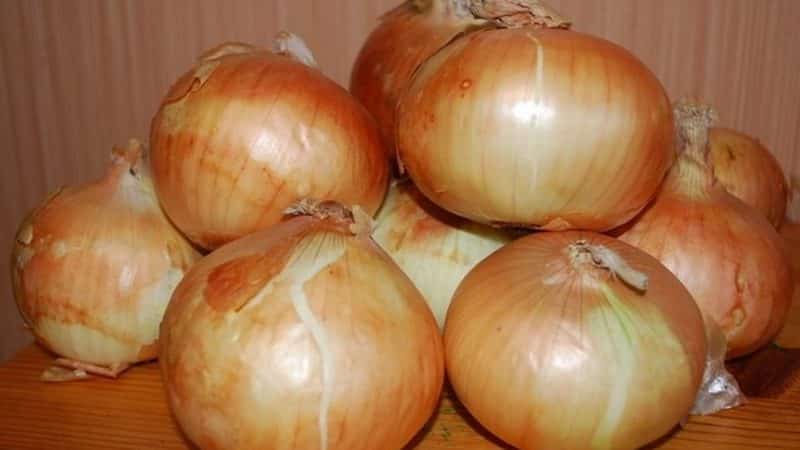
Origin and development
The Radar onion was bred by Dutch breeders, the originator is BEJO ZADEN B.V.
The variety was included in the State Register of Russia in 2006.
Chemical composition, trace elements and vitamins and beneficial properties
Bow Radar contains:
- essential oil with sulfur-containing formations;
- vitamins of group B, PP, C;
- proteins;
- Sahara;
- mineral salts.
The vegetable helps remove cholesterol from the body, fights bacteria and has anti-inflammatory properties. People who eat onions daily have stronger bones and a healthier digestive tract.
Ripening time and yield
This is an early ripening variety; 250-270 days pass from planting the seed to harvesting. This means that fresh greens can be cut at the end of May, and the bulbs reach maturity in May - June.
Commercial yield averages 159-250 c/ha, the maximum recorded figure is 374 c/ha.
Disease resistance
With proper care and compliance with agrotechnical requirements, Radar shows resistance to diseases and pests.However, unsuitable growing conditions and mistakes made by farmers can lead to downy mildew and onion fly infestation.
Characteristics of the bulb, description of appearance, taste
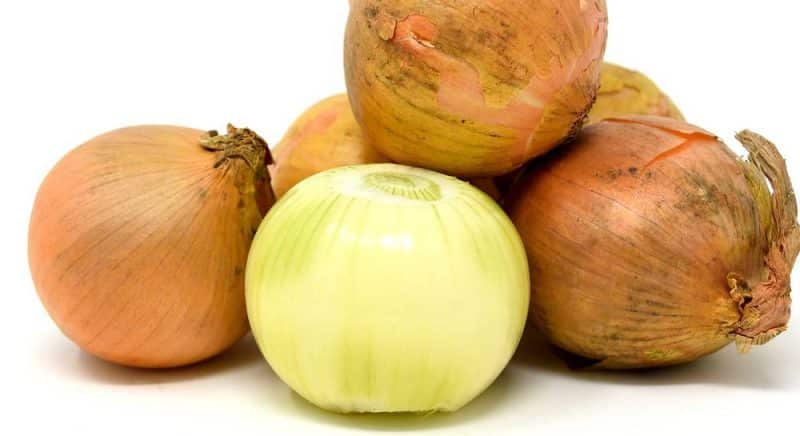
Onions form dark green feathers covered with a thin layer of waxy coating. The bulbs are transversely elliptical in shape and weigh on average 80-95 g, but individual specimens can reach a weight of 150-300 g.
The husk is golden brown, the flesh is white, juicy. The taste is semi-sharp.
For which regions is it best suited and what are the climate requirements?
The variety is included in the State Register for the North Caucasus region, however, due to its frost resistance and unpretentiousness to climate and soil composition, it is successfully cultivated in all regions.
The main advantages and disadvantages of the variety
Advantages of the Radar bow:
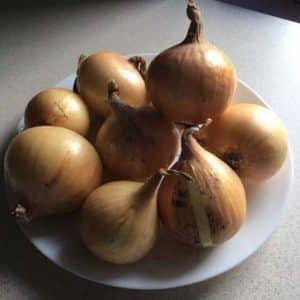
- high productivity;
- ease of care;
- resistance to frost, bolting, diseases and pests;
- long term storage;
- high germination of seedlings;
- possibility of universal use;
- ability to adapt to climatic conditions.
The downside of the variety is lower yield than other spring crops.
What is the difference from others
Let's compare Radar with other popular varieties of onions using the table:
| Variety | Ripening period | Productivity, c/ha | Bulb shape | Bulb weight, g | Taste |
| Radar | Early ripening | 159-250 | Transverse elliptical | 80-95 | Peninsular |
| Karatalsky | Early ripening | 200-440 | Round | 50-120 | Peninsular |
| Botherus | Mid-early | 200-400 | Transverse elliptical | 60-80 | Spicy |
Features of planting and growing
Radar onions can be grown from sets or seeds by sowing them as seedlings. Most often, gardeners choose the seedless method because it requires less effort.
Preparing for landing
First of all, choose high-quality planting material: seedlings with a diameter of up to 1 cm, without damage, signs of rot or germination. The larger the bulbs, the higher the risk of bolting next year.
Winter Radar onion sets are dried in advance: laid out on a warm, but not hot radiator and left for 2-3 weeks. After this, the planting material is disinfected: the bulbs are placed in a saline solution (1 tablespoon of salt per 1 liter of hot water) for 5 minutes, and then in a strong solution of potassium permanganate for half an hour. Then the seeds are thoroughly washed in clean water.
Approximately 1-1.5 months before planting the seedlings, prepare the soil. The soil is cleared of plant residues, dug up, watered with a solution of potassium permanganate for disinfection, and fertilizers are added: humus, superphosphate, wood ash and potassium salt.
Reference. It is not recommended to fertilize the soil with fresh manure - this will lead to an increase in green mass and make the bulbs loose, which will shorten the lifespan harvest storage.
Soil requirements
This variety does not have any special requirements for soil. Onions grow well in any soil, regardless of its composition and acidity.
Dates, scheme and rules of planting
The sets are planted during October; the exact timing depends on the climatic conditions of the growing region. In the North-Western region it is planted at the beginning of October, in the Moscow region - in the middle, in the Volgograd region planting is permissible even at the beginning of November.
Planting pattern:
- Prepare the beds at a distance of 20-30 cm from each other.
- Make furrows about 4 cm deep in the beds.
- Place the bulbs in them, deepening them by 2-3 cm (for large specimens - 3-4 cm) and maintaining an interval of 10 cm.
- Sprinkle the planting material with soil and mulch the beds with dry leaves, straw, humus or spruce branches.
Radar can also be grown from seeds. They are sown in August on a pre-prepared and fertilized plot according to the 1x10 pattern, deepening to 3 cm. Then the soil is watered and mulched.
Reference. For higher yields, planting is carried out in a checkerboard pattern.
Features of cultivation
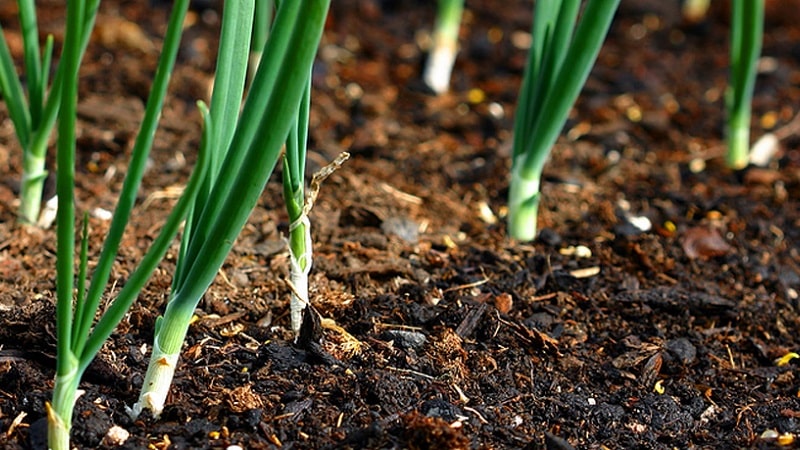
The quality and quantity of the harvest largely depend on how correctly the place for planting the onions was chosen. The site should be well lit and protected from drafts, located on a plain or a small hill. Moisture often accumulates in lowlands, which leads to crop destruction.
This variety is not recommended to be planted where bulbous and legume crops, potatoes, carrots and celery previously grew. The best predecessors are garlic, mustard, rapeseed, and cereals (except oats).
Reference. Onion Radar tolerates frosts down to -23°C under snow and up to -15°C without it.
Nuances of care
Radar is an unpretentious bow. However, to obtain a high-quality harvest, it requires minimal care in the form of regular watering, loosening the soil and fertilizing.
Watering mode
In mid-May, onions begin to be watered. The optimal frequency of watering is 1-2 times a week, depending on the climate of the region and the amount of precipitation.
Reference. Water for irrigation should be settled and heated to room temperature.
Loosening the soil and weeding
The soil is weeded as necessary - weeds are removed so that they do not take moisture and nutrients from the soil.
Loosen the soil shallowly so as not to damage the root system of plants. The first time this is done immediately after removing the winter shelter, and then after each watering or precipitation.This procedure improves the moisture and air permeability of the soil and prevents the formation of a hard crust on the surface.
Reference. To reduce the amount of loosening, the soil is mulched - the procedure retains moisture and limits the growth of weeds.
Top dressing
Plants are fed twice:
- in the spring, after the mulch is removed;
- when the plants have 4 leaves.
The most suitable fertilizers for onions:
- mullein mixed with water in a ratio of 1:10;
- bird droppings solution (1:15);
- wood ash, dry or diluted in water (1 tbsp per 10 l).
Disease and pest control
Mistakes made in caring for onions can lead to a decrease in its immunity.
The development of downy mildew (peronosporosis) is caused by improper irrigation regime and waterlogging of the soil. Affected plants are sprayed 2-3 times (with a break of 10 days) with the preparation “HOM” or a solution of copper sulfate. For preventative purposes, leaves that have reached a height of 10 cm are sprayed with Bordeaux mixture, and the beds are powdered with wood ash.
The most dangerous insects for Radar are onion flies. To pests have not spread throughout the area, the onions are sprayed 2-3 times with saline solution (1 glass per 10 liters of water) and regularly dusted with wood ash or tobacco dust. In case of severe damage, plants are treated with insecticidal preparations, for example, “Aktara” or “Alatar”.
Harvest and storage
The readiness of the crop for harvesting is indicated by yellowing and lodging of the leaves, as well as the fouling of the bulbs with golden-brown husks.
How and when to collect
Harvest on a dry and sunny day. This is done manually, digging up the bulbs with a shovel or pitchfork and pulling them out of the ground by the leaves, or using an onion harvesting complex.
Storage features and keeping quality of the variety
The collected bulbs are sorted by size and quality. Smaller heads are suitable for winter landing, and those that are larger and do not have damage or signs of rot - for storage in winter. After this, the onions are dried outside in the sun for about three days or about 10 days in a well-ventilated area - until the root collar dries out.
Then the roots and feathers of the bulbs are cut off, the heads are placed in boxes or bags and put in a cool place with good ventilation and moderate humidity. In such conditions, the Radar is stored until mid-winter - early spring.
What difficulties may there be when growing
Problems you may encounter when growing Radar onions:
- germination of onions in April due to incorrectly chosen time of planting;
- rotting of bulbs in case of planting in lowlands or excessive watering;
- lack of germination when planting onions deeper than 10 cm.
Advice from experienced gardeners
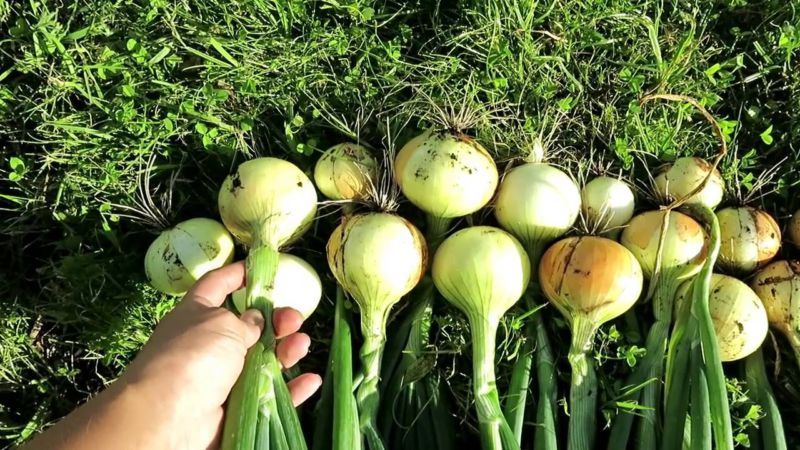
Recommendations from farmers who have been growing this variety for a long time:
- Plant mint, carrots, marigolds or tomatoes next to the onions - their smell repels pests.
- Remove mulch from garden beds early spring, otherwise the soil will overheat.
- Apply the first fertilizing immediately after the snow melts.
- Carry out preventive treatment of plantings against diseases and pests 2 times a month.
Reviews about the onion variety Radar
Gardeners speak positively about Radar onions:
Irina, Leningrad region: “I have been growing Radar for more than 5 years. This is the first winter onion that I managed to grow the first time; usually the bulbs sprouted ahead of time and died. What I like about Radar is its unpretentiousness and productivity.”
Valentina, Anapa: “I myself have been growing this onion for a long time and recommend it to all my friends and relatives. The taste is excellent, the yield is high, and at the same time it requires a minimum of effort.”
Vitaly, Voronezh region: “I’ve been planting Radar for 4 years and I really regret that I didn’t know about this onion earlier. I tried many varieties until I saw a photo and description of the Radar onion variety on the Internet. For me, the most suitable one - it gives a high yield, the bulbs are large, beautiful, and their taste is moderately sharp. The harvest is stored perfectly, I didn’t even expect this from winter onions.”
Conclusion
Radar is an onion variety characterized by high yield and early ripening. It is unpretentious to care, soil composition and climatic conditions, therefore it is suitable for cultivation in all regions of Russia.